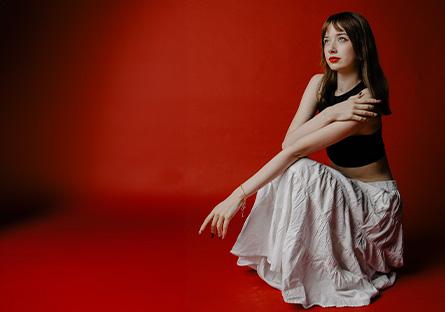This article appears for archival purposes. Any events, programs and/or initiatives mentioned may no longer be applicable.

“Here come the Jets, like a bat out of hell - Someone gets in our way, someone don't feel so well.”
West Side Story is on its way to the main stage of Scottsdale Community College (SCC) this spring! We caught up with some of the cast and crew to find out how this world-famous production is getting an Artichoke twist.
First performed in 1957, West Side Story remains just as enthralling and inspiring almost 60 years later. Maybe this is because Shakespeare's Romeo and Juliet, the inspiration for the story, hasn’t lost any of its shine even after more than 500 years. Originally conceived by legendary choreographer Jerome Robbins, the powerful combination of his dance set to the music of Leonard Bernstein and the lyrics of Stephen Sondheim has made this tragic love story one that audiences can’t get enough of.
SCC’s production brings a new spin to Robbins’ iconic dance numbers. When the Sharks and Jets get ready to rumble, eagle-eyed audience members will notice the distinct styles each gang moves with. That’s due to the use of two different choreographers bringing their unique style to bear on the characters.
Audrey Sullivan is choreographing the Jets. An Arizona native, she’ll be graduating with honors this spring. Audrey isn’t just a choreographer, either – she has a history of competitive Irish dancing!
Here’s what she had to say about tackling this famous production.
West Side Story is known for its groundbreaking choreography by Jerome Robbins. How did you approach honoring his original work while also bringing a fresh perspective to the dance sequences?
I not only looked into his work in West Side Story, but in other pieces he has worked on, such as the 1964 production of Fiddler on the Roof, and his works that he has done with the New York City Ballet over the years. By immersing myself in his choreography, I was able to begin finding little details that made a piece "a piece by Jerome Robbins" and incorporated those details and inspiration within my personal take of my numbers in West Side Story.
What were your primary inspirations when creating the choreography?
I did my research on jazz influences in the early 1960s, such as Bob Fosse, as well as the Latin dance influences in New York City and Puerto Rico at that time. By doing so, I was able to get an idea in my head that came to life in every rehearsal.
West Side Story includes a variety of dance styles, from ballet to jazz to Latin-inspired movements. How did you ensure that each style was authentically represented and seamlessly integrated into the production?
I did research when I wasn’t 100 percent sure about something, combined with prior knowledge from my dance background. I remember what my teachers used to tell me about where certain techniques originated, as well as their personal cultural experiences. These may seem unnoticeable, but those stories I have learned from or been a part of over the years were a personal touch of inspiration that I found true to the movement.
What are the biggest opportunities offered by employing two distinct choreographies, and what are the biggest challenges?
The biggest opportunities are not just the ability to explore the movement and have it individualized for every character but also for the acting. Having two different perspectives on one world true to life. If you look around, everyone has a different take, and because of this, this production of West Side Story is more grounded and real, which was one of the main guidelines we, as an artistic collective, had for the show.
Dance plays a crucial role in storytelling in West Side Story. How did you use movement to enhance the emotional depth of the characters and the narrative?
“Dance is the vessel that words can’t board.”
That is something I have always reminded myself of when dancing. This was a very big topic during the cleaning of my dance sections, which not only helped the movement but it helped tie in the acting, which is so crucial to any good stage production.
What advice would you give to aspiring choreographers who want to work on classic musicals like West Side Story?
Don’t lose sight of the through line of the story! That is not just for acting but for dancing as well. What story are you trying to tell? Does this support the central message? Does it lean into what you, as a choreographer, are telling to say on a personal level? Those three questions are a great start and ending place for any working production.
West Side Story at SCC opens April 11, with showings on select days until April 20. Don’t miss the chance to see Audrey’s choreography in action!